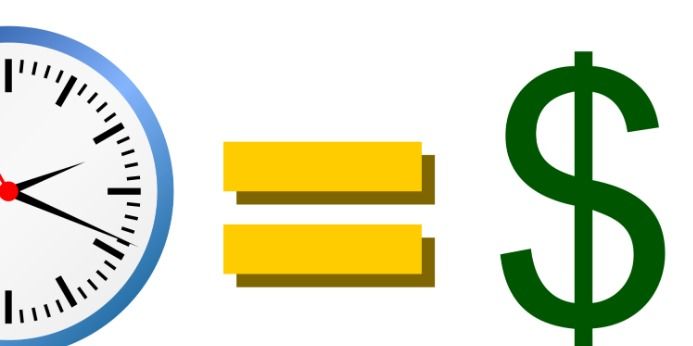

Scenario analysis for buying vs renting products such as laptops
A quick case by case walk through of when it makes sense to buy a product and when to rent!
Monday January 30, 2017,
6 min Read
When to buy vs when to rent is a classic dilemma for a long time, especially for conventional things such as house and cars. Start-ups such as AirBnB and Uber often move the needle towards rent in many cases. With growing acceptance of sharing economy, the scope of this question has now spread to other products in all dimensions of life. This includes baby products such as strollers and car seats, hobby products such as cameras and tents or even office products such as laptops and projectors.
Here is an attempt to figure out the winner in some of these cases with an interesting calculator for a bit complex case. I am taking a laptop as a product here for simplification, but the logic can be applied to almost every movable asset.
Long Term Use
Most simple case and simple answer are long term use. In the case of a laptop, if you are most assuredly planning to use the laptop on daily basis for 3 years of more, then definitely go for a buy.
Temporary use
When the need is most assuredly temporary, as opposed to the above case, then renting definitely makes sense. Scenarios for temporary needs of laptops could include cases such as short-term projects where you are hiring contractors, or when you are getting a bunch of interns during summer, or when you need laptops for training, events and so on so forth.
Availability and convenience of renting options, of course, play a role here. A few years back, almost everyone who could afford a car would buy one. This was mostly because of the inconvenience attached with hiring options such as Autos and Cabs. With Meru Cab and then Uber & OLA, much urban, well to do families are opting for not buying a car.
So, if you can book the products easily online, get them delivered in real time with assured quality then renting is definitely a winner in this case.
Peak requirements
This is a mixed scenario. Companies, especially startups operate in the very dynamic environment. With funding winter, last year, many start-ups initially prepared for rapid growth, but when it didn’t work out, they found their capital stuck in assets that were no more required. This played a substantial role in the survival of many start-ups.
If you are an early stage start-up and are dependent on funding for survival, then this is an important scenario. The start-up often has a peak stage, e.g. development phase where you need many developers to work on a tight timeline to deliver. But once the product is live, all you need is to fine tune it. In this scenario, the entire development team is not required. Ideally, the testing phase is short, you get the funding at this stage and in fact hire more people for next stage of growth. But in less than an ideal scenario, you need more time to prove yourself before you can secure the funding. And inevitably you will have to trim the team. The same scenario can happen to start-ups or even large corporates when you invest heavily in an idea and unexpectedly need to buy more time for proving the idea and go in survival mode.
In such cases, if you have procured the assets for the peak team size then your extremely precious capital is stuck in these non-productive assets. This can be avoided by renting instead of buying the assets. The right way to do this is to identify the baseline requirements. E.g. you will know you always need 3 developers to keep the website running. Then buy 3 laptops for key resources. For other resources, which is peak requirement, rent instead of buying. This way, the assets can be returned in case of distress without any commitment or lock up of capital.
Another good example is testing. If your product needs to be tested for compatibility with multiple devices including mobiles and tabs, you can keep basic testing with basic devices in the house and go far dedicated testing sprint where you rent a range of device and test your product on them for a short period.
Capital based start-up / new venture
Now, this is the most complicated scenario with many variables. Typically, in this scenario, there is a fixed budget for your start-up or corporate initiative after which you are expected to survive on your own at least for some time.
Buying may seem an obvious choice here, especially if this is a long-term initiative. But that is not necessarily the case. It completely depends on how effectively you can make your capital work.
Let's Assume the following:
The laptop you need costs Rs 32000 and Rent is Rs 2500 per month. Let's consider a 2-year scenario. Also, let us assume average cart size/ticket size of Rs 1000, Gross Margin per order Rs 300, CAC (Cost of customer acquisition) or Rs 1000 and CLV (Customer Lifetime Value for two years) of Rs 3000.
So, if you buy a laptop, you pay Rs 32000 upfront and that simply is the cost without any return. Instead, if you rent, you have Rs 29500 capital available that month which you can use to acquire 29-30 additional customers. If we normalize CLV per month, most likely these 30 customers will give you additional revenue of Rs 3700 that month. Next month, you can take Rs 2500 for rent out from that and use the rest to acquire additional 1 or 2 customers with additional Rs 125 / 250 revenue. This is on top of Rs 3700 for 30 customers acquired previously. If this goes on, in two years you would have paid Rs 60,000 in rent. However, you also would have earned upwards of Rs 1,50,000 from the capital you used to acquire the customers. The staggering difference, isn’t it?
That is why the saying “capital is precious”. I will be happy to share a simple excel sheet where you can change the above-mentioned assumptions, put the numbers relevant to you and find out yourself if it makes sense for you to buy the asset or rent it.
All in all, with growing appetite of millennials to live light, aided with fast-changing styles, products, and needs, it won’t be a surprise to see more and more people preferring consumption over ownership!




